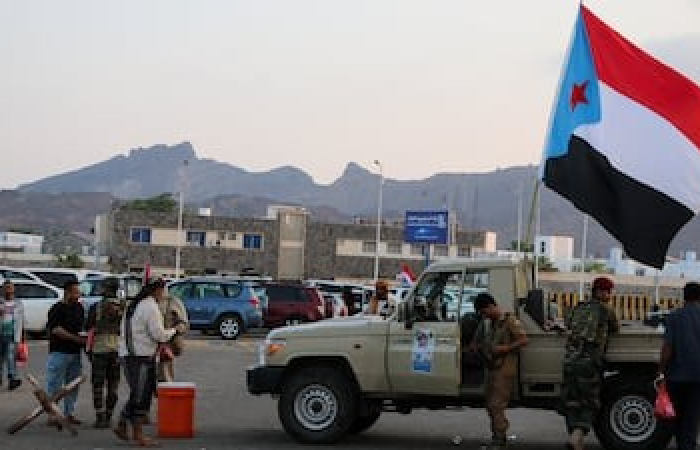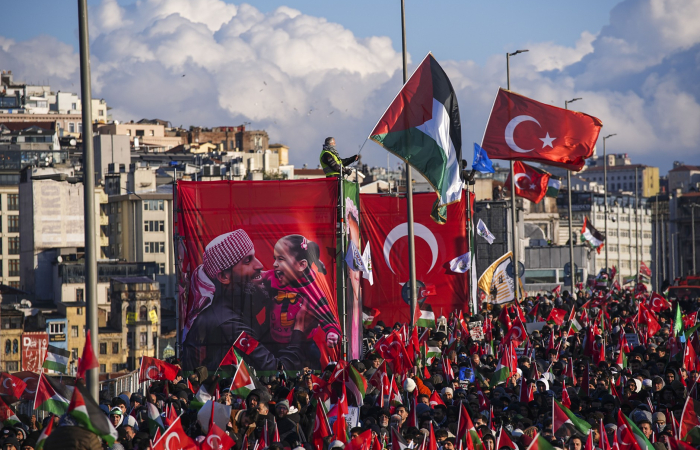A unique animated series of cartoons, created by a group of exceptional up-and-coming individuals committed to contributing to the peaceful settlement of the Nagorno-Karabakh conflict, has just been launched. Roxana Cristescu, Head, Eastern Europe, Caucasus and Central Asia at CMI (Martti Ahtisaari Centre) reflects on the significance of this innovative and bold initiative in this review for commonspace.eu
The first episode of a unique animated series created by a group of exceptional up-and-coming individuals committed to contribute to the peaceful settlement of the Nagorno-Karabakh conflict has just been released for the general public. The cartoons are a direct projection of their desire to bring about positive change to the war-induced traumas that have plagued their societies for generations. The series, suggestively titled Peacefall,is, according to one viewer in Baku, "one of the most out of the ordinary artistic endeavours produced in the last years" about this conflict.
The initiative is an outcome of a five year long dialogue process facilitated by Crisis Management Initiative in the region in the framework of the European Partnership for the Peaceful resolution of the conflict over Nagorno-Karabakh (EPNK). The scope of the process has been to set a basis for sustained engagement in peacebuilding in each of the societies affected by the conflict. The long standing dialogue did its outmost to shape innovative and consistent cross-conflict confidence building practice that, in a shared manner, would acknowledge and respect all the actors involved in the process.
In fact, as one can notice throughout Peacefall episodes, the authors' intention is not to provide ad-hoc documentation of facts and historical analysis or to single out different interpretations of reality, negative or positive as they might be. What instead is offered is a first row seat to a systematic effort to expose - through fiction - the unnoticeable devastating effects of decades-long unresolved grievances and mutual violence. The cartoon's artistic pursuit is to challenge our consensual illusion of a "frozen" context in the face of so much underlying complexity and insidious change.
 The characters of the cartoon and their stories have been created to "speak" to a broad audience in the region. They have been designed to tackle our myopic attention and expand our understanding beyond what happens inside our own bubble and immediate reality. Their stories will perhaps patch the emotional blind spots that keep all of us detached from the steady decline of entire societies directly reliant for their wellbeing on a sustainable settlement. Even if only for five minutes at a time, the characters attempt to challenge with each episode the accepted wisdom that we can waver in this conflict, and no extraordinary disaster follows, and that more wavering is just fine. The cartoons challenge the idea "Why act now when the future is far off?"
The characters of the cartoon and their stories have been created to "speak" to a broad audience in the region. They have been designed to tackle our myopic attention and expand our understanding beyond what happens inside our own bubble and immediate reality. Their stories will perhaps patch the emotional blind spots that keep all of us detached from the steady decline of entire societies directly reliant for their wellbeing on a sustainable settlement. Even if only for five minutes at a time, the characters attempt to challenge with each episode the accepted wisdom that we can waver in this conflict, and no extraordinary disaster follows, and that more wavering is just fine. The cartoons challenge the idea "Why act now when the future is far off?"
The choice of the animated communication is not a random one either. It is a conscious response to a public sphere saturated with official narratives and expert exchanges. It is an attempt to "animate" a space rich in analysis, conflict terminology and geopolitics language, but often self-absorbed, oblivious to its limited outreach, and incapable of capturing and processing one of the core issues of the problem - human behaviour and agency in conflict.
Setting aside hard data and bleak social indicators of societies' transformation under years of protracted conflict, Peacefall episodes mirror the emotional journeys and stories of millions of people who are suffering from the conflict. The scenarios put under the spotlight those phenomena that - particularly in the expert community or official circles - are registered as just a reflection of something bigger happening elsewhere - "significant but not our business".
The first cartoon in the series is an attempt to cut narrow the realpolitik curtain and encourage searching for solutions beyond mainstream explanations that blame the lack of progress in the peace process either on ethnic diversity, geopolitical alliances or statesmen with overarching power crafting little wonders in their laboratories up in a tower. The series displays a societal context that people themselves shape, make use of, exploit, and suffer from, in the absence of an official settlement of the conflict. It lays bare life happening "outside" while the "magic potion" refuses to work in vitro.
The producer of the first episode, titled "The Legacy" is Hayk Toroyan. He told commonspace.eu,
"The idea behind this particular episode is to show the legacy or the tradition passed from one generation to the other. Traditions, knowledge, wisdom and vision can be a great asset and help the youth in their life. But sometimes the legacy becomes a curse. With knowledge come stereotypes, with wisdom comes close-mindedness, with vision comes blurriness. In this particular episode we tried to show the passing of this 'tradition of war' to a younger generation, which results in senseless wars for something that started a long time ago. Children grow up with hatred and rage, they are not given the chance to see things differently, to look at the conflict from a different angle. The only angle they inherited was the war angle, the only tradition they inherited was the tradition of war. Since birth they are cursed with their legacy, legacy of war and hatred."
Photo above: Roxana Cristescu (left) speaking to some of the young people behind the annimated cartoon series Peacefall
You may watch the first episode of Peacefall here. The second episode will be available in April.
Source: Roxana Cristescu is Head, Eastern Europe, Caucasus and Central Asia at CMI (Martti Ahtisaari Centre). She contributed this review for commonspace.eu. Haik Toroyan is one of the producers of the first episode of Peacefall






